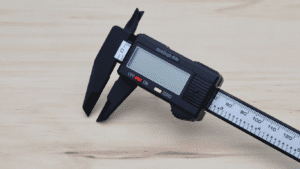Introduction
In the field of education, the acronym TLM stands for Teaching Learning Materials. These materials are a fundamental part of the teaching-learning process, used to engage students actively and enhance their understanding. TLM can include a wide range of resources, such as textbooks, visual aids, digital resources, hands-on materials, and much more. They are essential in transforming theoretical concepts into practical experiences, making learning interactive and enjoyable.
This guide delves into the meaning, types, significance, and best practices for implementing TLM in classrooms, covering all major aspects to give you a comprehensive understanding.
What is the Full Form of TLM?
TLM stands for Teaching Learning Materials. These are tools used by educators to support teaching and make learning more interactive. Teaching learning materials include a variety of resources that can help explain abstract concepts in a tangible way, catering to various learning styles.
TLM is crucial in both traditional and modern teaching environments, supporting students in primary, secondary, and higher education to grasp new concepts effectively.
Importance of Teaching Learning Materials
1. Enhancing Learning Engagement
TLM encourages students to participate actively in learning activities rather than passively absorbing information. Materials like flashcards, models, charts, and multimedia presentations can help hold students’ attention and make learning more engaging.
2. Simplifying Complex Concepts
One of the core purposes of TLM is to simplify complex ideas. Whether it’s explaining scientific theories or historical events, TLM offers a multi-sensory approach that simplifies learning for students of varying intellectual levels.
3. Supporting Different Learning Styles
Every student learns differently. Some may understand better through visual aids, while others might prefer auditory or kinesthetic learning methods. TLM provides flexibility in teaching methods, ensuring that teachers can cater to all students effectively.
4. Encouraging Critical Thinking and Problem-Solving
When students interact with materials, especially in hands-on activities, they are encouraged to think critically and solve problems on their own. Tools like puzzles, experiments, and role-playing exercises foster creativity and logical reasoning.
5. Reinforcing Classroom Learning
TLM aids in reinforcing what is taught in the classroom. Students retain more information when they interact with learning materials that provide concrete examples of abstract concepts.
Types of Teaching Learning Materials
1. Visual Materials
Visual materials, as the name suggests, rely on the sense of sight. These include charts, maps, posters, diagrams, flashcards, and even blackboards. Visual aids can simplify complex concepts, making them easier to understand through illustrations and visual representations.
Examples:
- Maps for geography lessons
- Diagrams for scientific processes
- Flashcards for language learning
2. Audio Materials
Audio materials enhance learning through the sense of hearing. These include audio recordings, podcasts, and music-based learning resources, and are particularly helpful for auditory learners who retain information better through listening.
Examples:
- Language learning through podcasts
- Educational songs
- Recorded lectures and stories
3. Audio-Visual Materials
These combine both auditory and visual elements to engage multiple senses, thus providing a more immersive learning experience. Audio-visual materials are highly effective in holding students’ attention and improving retention rates.
Examples:
- Educational videos and documentaries
- Interactive computer programs
- Animations and simulations
4. Hands-On Materials (Tactile)
Hands-on materials encourage learning through touch and manipulation. These are ideal for subjects like mathematics and science, where students can learn concepts such as measurements, volume, or physics experiments by physically interacting with materials.
Examples:
- Geometry sets for math
- Models of the solar system
- Laboratory equipment for science experiments
5. Digital Materials
In the digital age, TLM has expanded to include a variety of digital tools and resources such as online simulations, educational apps, and interactive websites. These resources have become indispensable in the modern classroom, offering access to a wide range of learning experiences.
Examples:
- Online quizzes and exercises
- Educational apps and games
- Virtual labs and simulations
Role of TLM in Modern Education
TLM has evolved from simple tools like chalk and blackboards to more advanced technologies like digital simulations and interactive whiteboards. The role of TLM today extends beyond the classroom, with many schools integrating technology to create a more engaging and immersive learning environment.
1. Technology-Enhanced Learning
Digital TLM such as tablets, projectors, and e-learning platforms have revolutionized the education landscape. These tools help to engage students beyond textbooks and make education accessible, especially in remote learning setups.
2. Cultural and Contextual Relevance
A key advantage of TLM is the ability to adapt materials to the cultural and contextual needs of students. For example, TLM can be designed to relate to current events or the local environment, such as using materials that reference sports events or national holidays.
3. Promoting Inclusivity
TLM plays a vital role in inclusive education, where materials can be tailored to meet the needs of students with learning disabilities. For instance, braille materials for visually impaired students or tactile learning objects for students with autism can ensure that no one is left behind in the learning process.
Challenges in the Implementation of TLM
Despite its numerous benefits, the widespread adoption and implementation of TLM face several challenges:
1. Resource Availability
In many regions, especially in rural areas, access to proper teaching-learning materials is limited. Schools may lack the funds or resources to invest in TLM, relying on outdated methods of instruction.
2. Teacher Training
While TLM is beneficial, its effectiveness depends largely on how well it is implemented. Teachers need proper training to create and use TLM effectively in the classroom. Lack of adequate teacher training can hinder the potential of these resources.
3. Time Constraints
Preparing TLM can be time-consuming, particularly in classrooms where teachers have to manage large groups of students. Many educators revert to traditional teaching methods due to the effort required to create and utilize TLM regularly.
Best Practices for Effective Use of TLM
Align TLM with Learning Objectives
The materials should directly relate to the lesson plan and learning outcomes. Whether it’s using flashcards to improve vocabulary or models to explain scientific concepts, ensure that TLM serves the purpose of reinforcing the lesson.
Encourage Student Participation
Allow students to interact with the materials, whether through group activities or individual tasks. This will promote active learning and enhance retention.
Use Local and Low-Cost Resources
In areas with limited access to commercial TLM, teachers can use locally available materials like seeds, sticks, or recycled objects. Creativity in using such resources can make the learning process more engaging and accessible.
Incorporate Technology
Where possible, integrate digital TLM like educational apps, online simulations, and video-based learning. This can enhance learning, especially for visual and auditory learners.
Conclusion
Teaching Learning Materials (TLM) are indispensable tools in modern education. They not only make learning more engaging and interactive but also support teachers in delivering lessons effectively across various subjects. By understanding the full range of TLM, educators can cater to different learning styles, simplify complex concepts, and make the learning process more enjoyable and efficient.
Although there are challenges in the widespread implementation of TLM, particularly in under-resourced schools, the use of locally sourced, low-cost materials and technology can bridge the gap. With the right approach, TLM can truly revolutionize the educational landscape.
FAQs on TLM (Teaching Learning Materials)
1. What does TLM stand for?
TLM stands for Teaching Learning Materials. These are resources used by teachers to facilitate student learning and make educational concepts easier to understand through visual, auditory, or tactile means.
2. What are examples of Teaching Learning Materials?
Examples of TLM include:
- Visual aids like charts, maps, and posters
- Audio materials such as recordings or podcasts
- Audio-visual aids like educational videos and documentaries
- Hands-on tools like lab equipment, models, and puzzles
- Digital materials like educational apps and online quizzes
3. Why is TLM important in education?
TLM helps to:
- Engage students actively in learning
- Simplify complex concepts
- Cater to different learning styles (visual, auditory, kinesthetic)
- Promote critical thinking and problem-solving
- Reinforce classroom learning and boost retention
4. How does TLM benefit students with different learning styles?
TLM provides varied approaches—visuals for visual learners, audio for auditory learners, and hands-on materials for kinesthetic learners—making learning more accessible and effective for all students.
5. What are the challenges in using TLM?
Challenges include:
- Lack of resources in underfunded schools
- Time constraints in preparing and implementing TLM
- Inadequate teacher training on how to use TLM effectively
6. Can TLM be used in online learning?
Yes, digital TLM such as e-learning platforms, online simulations, and educational apps can be highly effective in online or hybrid learning environments, supporting student engagement remotely.
7. How can teachers create low-cost TLM?
Teachers can use locally available materials like recycled objects, natural resources, or everyday items. For example, bottle caps can be used for math counting exercises, or seeds can demonstrate biological concepts.
8. What role does technology play in modern TLM?
Technology enhances TLM by incorporating digital tools such as interactive whiteboards, online simulations, and apps, allowing for a more dynamic and interactive learning experience.




